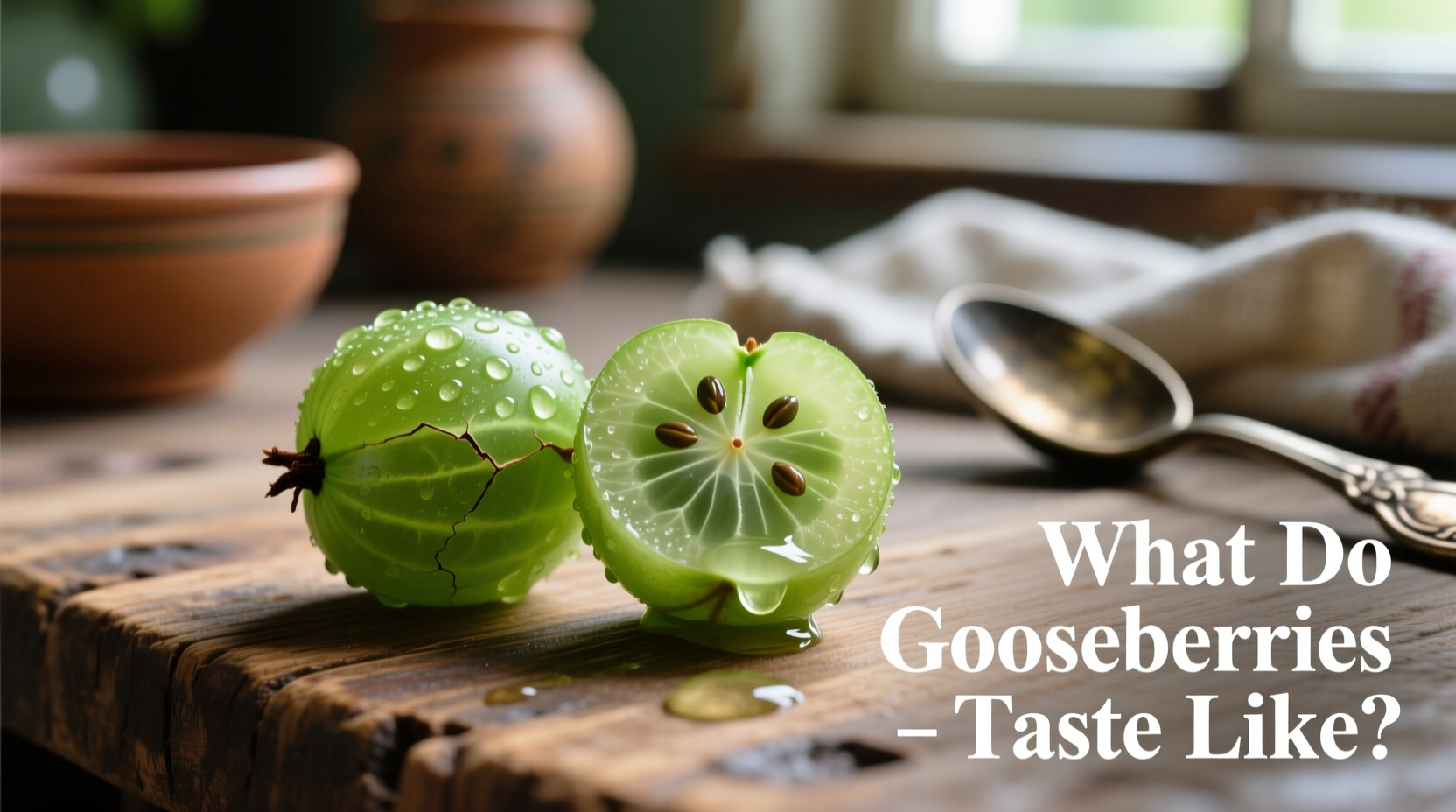Ever wondered what makes gooseberries such a prized ingredient in British desserts and Scandinavian preserves? These small, translucent berries offer one of nature's most dynamic flavor journeys. Whether you're foraging wild varieties or selecting cultivated types at a farmers' market, understanding their taste evolution is key to unlocking their culinary potential.
The Gooseberry Flavor Spectrum: From Sour to Sweet
Gooseberries exist in a remarkable state of flavor transformation throughout their ripening process. Unlike many fruits that simply become sweeter, gooseberries undergo a complete flavor metamorphosis:
- Unripe (green) stage: Intensely tart with pronounced acidity, reminiscent of underripe kiwi or sour green apples
- Mid-ripeness (pink/red) stage: Balanced sweet-tart profile with notes of rhubarb and citrus zest
- Fully ripe (deep purple/red) stage: Complex sweetness with tropical undertones of passion fruit and lychee
This dramatic flavor evolution explains why gooseberries serve dual purposes in culinary traditions—they're used green for chutneys and savory sauces, then again when ripe for jams and desserts. The USDA Agricultural Research Service confirms that malic and citric acid levels decrease by up to 40% as gooseberries ripen, while sugar content nearly doubles.
Ripeness Matters: A Practical Flavor Comparison
| Ripeness Stage | Primary Flavor Notes | Sugar-to-Acid Ratio | Best Culinary Uses |
|---|---|---|---|
| Green (unripe) | Sharp citrus, tart green apple | 1:3.5 | Pickles, chutneys, savory sauces |
| Pink (semi-ripe) | Rhubarb, cranberry, citrus zest | 1:1.8 | Pies, crumbles, compotes |
| Red/Purple (ripe) | Passion fruit, lychee, sweet melon | 2.2:1 | Jams, sorbets, fresh desserts |
This ripeness-dependent flavor profile makes gooseberries uniquely versatile. As noted in University of Minnesota Extension research, European varieties (Ribes uva-crispa) tend toward more pronounced tartness, while American species (Ribes hirtellum) develop sweeter notes even when less ripe.
Sensory Experience: Beyond Basic Sweet and Sour
When describing what do gooseberries taste like, professional tasters identify several nuanced characteristics:
- Mouthfeel: Crisp texture with slight crunch from tiny seeds
- Aromatic notes: Floral undertones in ripe varieties, grassy notes when unripe
- Aftertaste: Clean finish with lingering citrus notes
- Temperature effect: Chilling enhances tartness; cooking develops deeper fruit notes

Chefs at institutions like the Royal Horticultural Society emphasize that proper harvesting technique affects flavor development. Berries picked slightly underripe continue ripening off the vine but develop more complex flavors when allowed to mature fully on the plant.
Culinary Applications Based on Taste Profile
Understanding how do gooseberries taste directly informs their best culinary applications:
For Tart Green Gooseberries
When exploring what do unripe gooseberries taste like, you'll discover their high pectin content makes them ideal for:
- Savory gastriques to accompany fatty meats like duck or pork
- Chutneys that cut through rich cheeses
- Cocktail shrubs for complex acidity
For Sweet-Tart Ripe Varieties
Knowing what do ripe gooseberries taste like helps maximize their dessert potential:
- Traditional British gooseberry fool (whipped cream dessert)
- Scandinavian summer puddings with berry compote
- Modern interpretations like gooseberry curd tarts
Seasonality and Flavor Development
Gooseberry season runs from late spring to early summer in most temperate climates, with flavor intensity peaking during this narrow window. According to Bon Appétit's culinary research, the berries' flavor compounds develop most complexity when harvested after morning dew has evaporated but before afternoon heat.
Unlike many fruits that lose flavor intensity during storage, properly refrigerated gooseberries can actually develop more nuanced flavors over 3-5 days as enzymatic processes continue. This post-harvest flavor development makes them particularly valuable for professional kitchens planning seasonal menus.
Practical Tips for First-Time Tasters
If you're wondering do gooseberries taste good, consider these practical tips:
- Rinse berries but avoid soaking to preserve delicate flavor compounds
- Remove stems and tails with a small knife for best texture
- Pair tart varieties with honey or elderflower to balance acidity
- Add ripe berries to fruit salads at the last moment to prevent sogginess
For those curious about what do gooseberries taste like compared to other berries, think of them as nature's flavor bridge between currants and kiwi—offering the tartness of the former with the tropical complexity of the latter.
Frequently Asked Questions
Do gooseberries taste like grapes?
No, gooseberries don't resemble grapes. While both grow in clusters, gooseberries have a distinctive tart-sweet profile with citrus and tropical notes, unlike grapes' simple sugar-forward flavor. The name "gooseberry" likely comes from the Dutch "kruisbes" (cross berry) rather than any connection to geese or grapes.
Why are some gooseberries so sour?
Unripe gooseberries contain high levels of malic and citric acids (up to 3.5% by weight) which create their characteristic sourness. This acidity serves as a natural defense mechanism against pests. As berries ripen, sugar content increases while acid levels decrease, creating the balanced sweet-tart profile of fully mature fruits.
Can you eat gooseberries raw?
Yes, ripe gooseberries can be eaten raw and are delicious in fruit salads or as a garnish. However, many prefer semi-ripe berries cooked with sugar to balance their natural tartness. Wild varieties tend to be more sour than cultivated types and usually benefit from sweetening.
How does cooking affect gooseberry flavor?
Cooking transforms gooseberry flavor significantly. Heat breaks down cell walls, releasing more complex flavor compounds while mellowing sharp acidity. When making jams or compotes, the addition of sugar creates new flavor compounds through caramelization, developing notes of baked apple and citrus zest that aren't present in raw berries.











 浙公网安备
33010002000092号
浙公网安备
33010002000092号 浙B2-20120091-4
浙B2-20120091-4